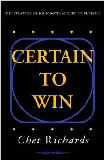It can only enrich both efforts to find that two separate lines of inquiry have reached the same conclusions. This remains my impression after reading Coram’s book (2002) and starting on Richards’ “Certain to Win” (2004). I will be spending some time carefully interpreting two independent sets of terminology, influenced by two different backgrounds, including pathways through differing sets of domains. But I feel safe in speculating that we are looking at the same basic ideas like “two sides of the same coin”.
I will be spending some time carefully interpreting two independent sets of terminology, influenced by two different backgrounds, including pathways through differing sets of domains. But I feel safe in speculating that we are looking at the same basic ideas like “two sides of the same coin”.
Boyd and I both talk in terms of depriving the opponent of the time he needs:
- Boyd: “operate at a faster tempo, …inside his adversary’s time scale.” (Coram, 2002, p. 327)
- Maier: giving them too much puzzle to solve while also limiting their time.
Note that these expressions were published the same year, with no awareness of each other:
- “they aim to attack the ability of the other side to make effective decisions under conditions of danger, fear, and uncertainty and to increase our ability to function well under these conditions.” (Richards, 2004, p. 10)
- “Results also show a clear dynamic balancing the total load managed by each of 10 dyads, defining opponents as a system, pushing each other toward cognitive overload and failure.” (Maier, 2004, p. 562)
The basic commodity in each model is explicitly:
- Boyd: Time
- Maier: Cognitive Load
but they both amount to limits of human processing leading up to a decision. They both involve domains explored famously by Endsley (SA) and Klein (NDM), as well as Roscoe, Damos, Schvaneveldt, Battig and many others.
And we have not been alone. Richards (2004) points out that:
- “Although Peters [“Thriving on Chaos”] did not mention Boyd by name, their conclusions were too similar to be simple coincidence” (p. 10),
- “a doctrine of war and a car manufacturing system [Toyota] turning out to be brothers under the skin…” (p. 10),
- “Honda, however,chose to attack [Yamaha] through speed and agility” (p. 26).
To me, it is no coincidence that all these events would appear synchronously as computation power began to explode, making possible explicit exploration of systems and complexity. The birth and growth of organizations like Society for Chaos theory in Psychology and Life Sciences, and System Dynamics Society, where a century earlier, pencil-and-paper mathematics recoiled in horror at the very thought that non-linearity was the rule in this world, rather than the exception.
Active intelligent agents struggling to undo each other. Boyd started from a pair of jet fighters, I started from a pair of unarmed fighters—not as different as might seem. I got delayed by being an unconnected civilian, but now I think I see a way to join the discussion. I expect my contribution to be a formalized procedure for both evaluating and training of individuals and dyadic teams in:
- increasing this ability to make decisions under pressure,
- driving an opponent promptly to one of of three defined states of failure,
- recovering from a failure state in time to avoid, or at least postpone, total devastation.
Copyright Herbert N. Maier, 2015
